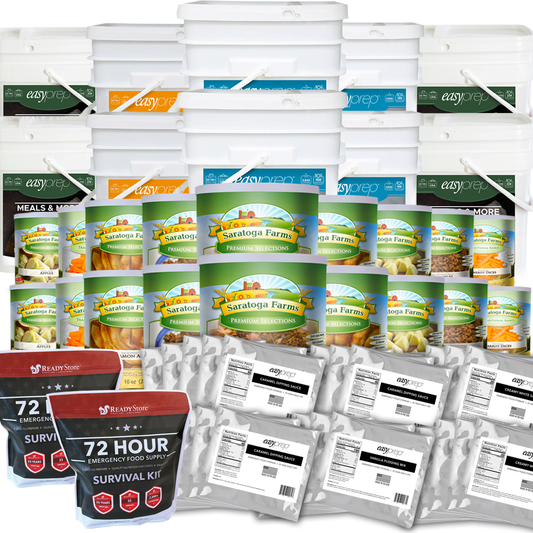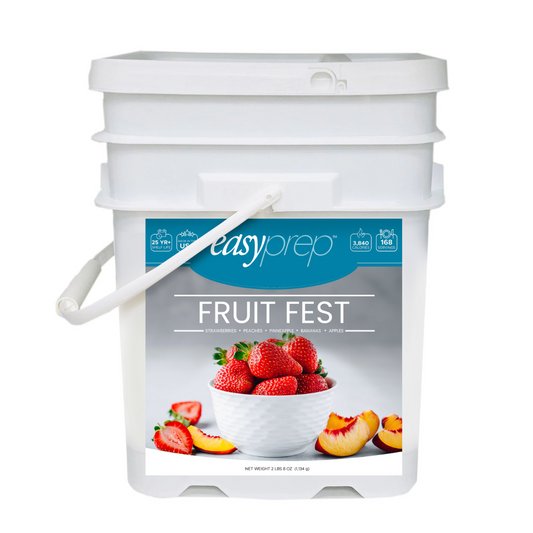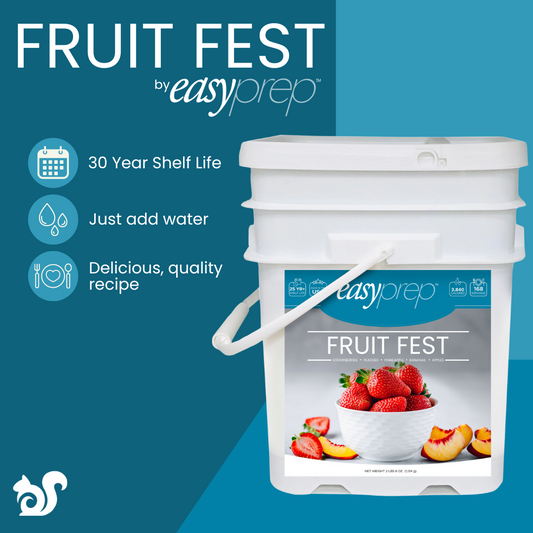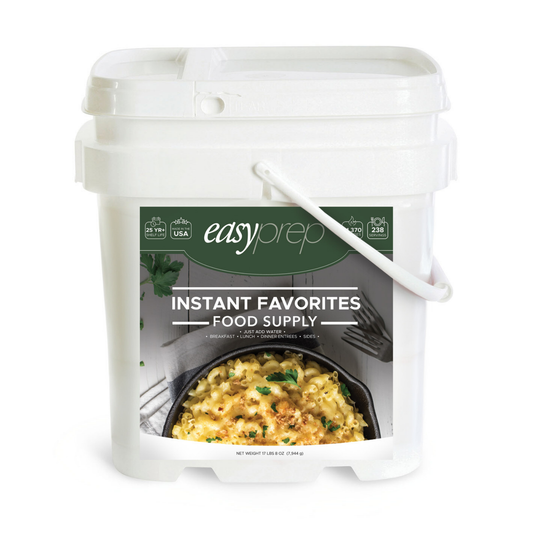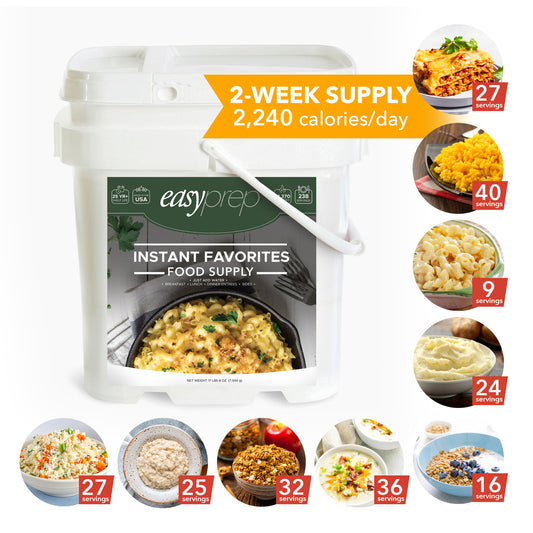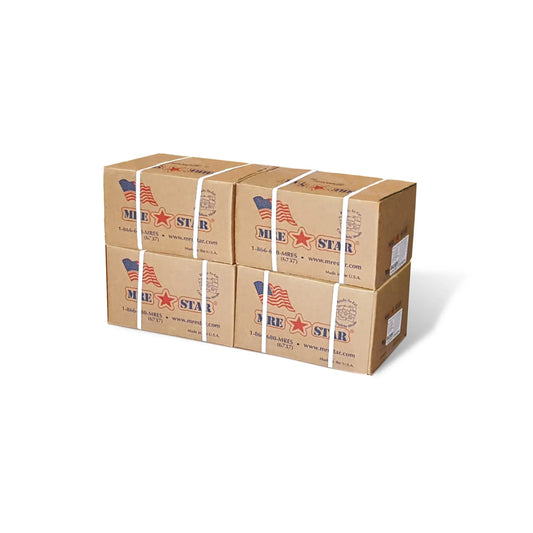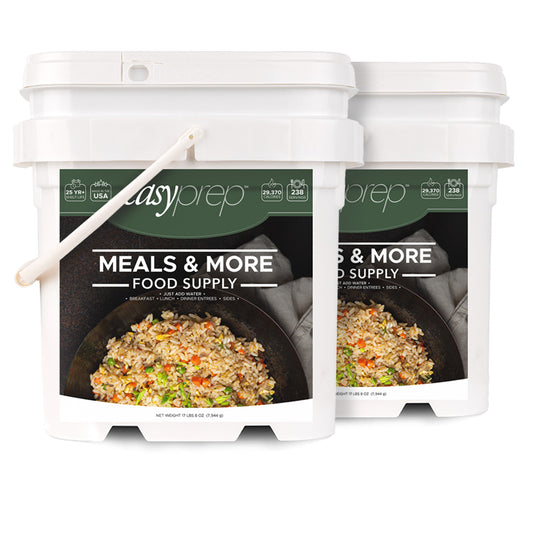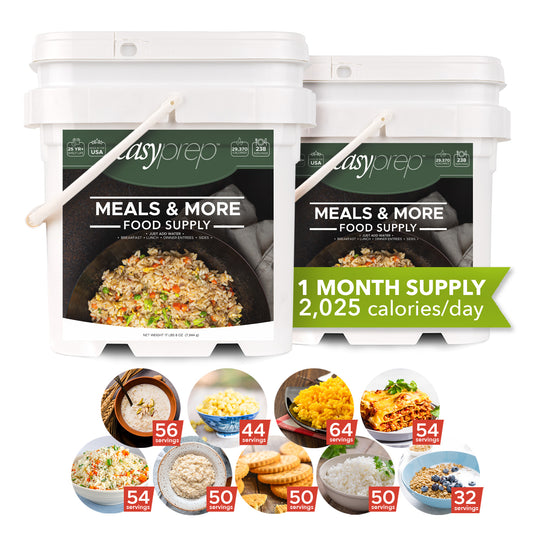It is about the time of year when produce from the
garden is starting to make its way into your homes, onto your countertops, tables, and even into your dinner. Wouldn’t it be nice if your produce could just be harvested throughout the entire year so we wouldn’t have to worry about what to do with the extra?
Trying to decide what to do with all those extra
veggies that your garden is producing from all your green thumbs and hard labor can be a challenge. If you feel like you’re caught in a pickle you are not alone. Let’s take a look at one solution … pickling!
 Where Did Pickling Come From?
Where Did Pickling Come From?
Pickling, one of the oldest forms of food preservation, has been around for thousands of years. Nobody knows the exact details of how the pickle came to be, but archaeological evidence shows that it has been around since 2400 BC as a way to preserve food. Pickles also played a big role in helping Christopher Columbus and his crew last the long voyage to America. At the time of Columbus, many expeditions were thwarted due to scurvy - a disease caused by a lack of Vitamin C. Columbus’ ship stocker, Amerigo Vespucci, made sure to stock the ships with plenty of pickles and, as a result, helped prevent a scurvy outbreak. The name “America” came from Amerigo Vespucci, the pickle merchant.
Napoleon Bonaparte also fancied the pickle and even helped advance the preservation method of pickling. Believing that pickles had many health benefits, Bonaparte offered a cash prize to anyone that could extend the life of the pickle so his troops could take pickles into the field. As a result of the incentive, Nicholas Appert, now known as the “father of canning,” discovered the water bath method to kill bacteria and preserve food for extended periods of time.The water bath method is still used today when making pickles.
Tips to Pickling
Pickling your extra harvest is a great way to preserve your food to be enjoyed at a later time. Pickling can also increase the nutritional value of foods as bacteria produce B vitamins through fermentation. So, get creative with with your pickling, have fun, and if you find yourself in a pickle, it’s no big “dill,” just check out the recipes below.
Keep these tips in mind as you begin your pickle journey:
-The level of acidity (or pH level) in a pickle is very important to safety. Do not alter the type or amount of vinegar, water, sugar, or salt used when pickling. These ingredients are meant to create and maintain the correct pH level to preserve your food.
-Use fresh vegetables free of any spoilage.
-Use a canning or pickling salt. Table salt contains additional non-caking additives that can make your pickle juice cloudy.
-Using a canner is the safest way to pickle and can your own foods.
According to the National Center for Home Food Preservation, “processing the pickles in a boiling-water canner will prevent” spoilage from “microorganisms, particularly yeasts and molds.”
 Ingredients:
Ingredients:• 6 lbs of 4- to 5-inch pickling cucumbers
• 8 cups thinly sliced onions (about 3 pounds)
• 1/2 cup canning or pickling salt
• 4 cups vinegar (5 percent)
• 4-1/2 cups sugar
• 2 tbsp mustard seed
• 1-1/2 tbsp celery seed
• 1 tbsp ground turmeric
• 1 cup pickling lime (optional- for use in variation below for making firmer pickles)
Directions:
1. Wash cucumbers. Trim 1/16-inch off blossom end and discard. Cut into 3/16-inch slices.
2. Combine cucumbers and onions together in a large bowl. Add salt. Cover with 2 inches ice. Refrigerate 3 to 4 hours, adding more ice as needed.
3. Combine remaining ingredients in a large pot. Boil 10 minutes. Drain, then add cucumbers and onions and slowly reheat to boiling.
4. Fill jars with slices and cooking syrup, leaving 1/2-inch headspace. Remove air bubbles and fit lids.

Note: After processing and cooling, pickles should be stored 4-5 weeks to create best flavor.
 Ingredients:
Ingredients:• 7 pounds asparagus
• 7 large garlic cloves
• 3 cups water
• 3 cups white distilled vinegar (5%)
• 7 small hot peppers (optional)
• 1/3 cup canning salt
• 2 teaspoons dill seed
Directions:
1. Thoroughly wash and rinse canning jars; keep hot until ready to use.
2. Clean asparagus well, but gently, under running water. Trim stems from the bottom to leave spears with tips that fit into the canning jar with a little less than ½-inch headspace. Peel and wash garlic cloves. Place a garlic clove at the bottom of each empty jar, then tightly pack asparagus into jars with the blunt ends down.
3. In an 8-quart Dutch oven or saucepot, combine water, vinegar, hot peppers (optional), salt and dill seed. Bring to a boil. Place one hot pepper (if used) in each jar over asparagus spears. Pour boiling hot pickling brine over spears, leaving ½-inch headspace.
4. Release air bubbles and adjust headspace if needed. Wipe rims of jars with a damp, clean paper towel; add lids.
5.Process in a boiling water canner according to the recommendations in Table 2. Let cool, undisturbed, for 12-24 hours and check for seals.

 Ingredients:
Ingredients:
• 7 lbs of 2- to 2-1/2-inch diameter beets
• 4 cups vinegar (5 percent)
• 1-1/2 teaspoons canning or pickling salt
• 2 cups sugar
• 2 cups water
• 2 cinnamon sticks
• 12 whole cloves
• 4 to 6 onions (2- to 2-1/2-inch diameter) if desired
Directions:
1. Cut off beet tops, leaving 1 inch of stem and roots to prevent bleeding of color. Clean well. Sort for size. Cover similar sizes together with boiling water and cook until tender (about 25 to 30 minutes). Caution: Drain and discard liquid.
2. Cool beets. Trim off roots and stems and slip off skins. Slice into even 1/4-inch slices. Peel and thinly slice onions. Combine vinegar, salt, sugar, and fresh water.
3. Put spices in cheesecloth bag and add to vinegar mixture. Bring to a boil. Add beets and onions. Simmer 5 minutes. Remove spice bag.
4. Fill jars with beets and onions, leaving 1/2-inch headspace. Add hot vinegar mixture, allowing 1/2-inch headspace.
5. Adjust lids and process according to the recommendations in this table

 Ingredients:
Ingredients:
• 2 3/4 pounds peeled carrots (about 3½ pounds as purchased)
• 5 1/2 cups white distilled vinegar (5%)
• 1 cup water
• 2 cups sugar
• 2 teaspoons canning salt
• 8 teaspoons mustard seed
• 4 teaspoons celery seed
Directions:
1. Wash and rinse pint canning jars; keep hot until ready to use. Prepare lids and bands according to manufacturer's directions.
2. Wash and peel carrots thoroughly. Wash again after peeling, then cut into rounds that are approximately ½-inch thick.
3. Combine vinegar, water, sugar and canning salt in an 8-quart Dutch oven or stockpot. Bring to a boil and boil gently 3 minutes. Add carrots and bring back to a boil. Then reduce heat to a simmer and heat until half-cooked (about 10 minutes).
4. Meanwhile, place 2 teaspoons mustard seed and 1 teaspoon celery seed into each empty, clean, hot pint jar.
5. Fill jars with the hot carrots, leaving 1-inch headspace. Cover with hot pickling liquid, leaving ½-inch headspace. Remove air bubbles and adjust headspace if needed. Wipe rims of jars with a dampened, clean paper towel; adjust lids as you go.
6. Process in a boiling water canner, as recommended in Table 4. Let cool 12-24 hours and check for seals.

Note: Allow carrots to sit in processed jars for 3 to 5 days before consuming for best flavor development.
 Ingredients:
Ingredients:• 16 cups fresh zucchini, sliced
• 4 cups onions, thinly sliced
• 1/2 cup canning or pickling salt
• 4 cups white vinegar (5%)
• 2 cups sugar
• 4 tbsp mustard seed
• 2 tbsp celery seed
• 2 tsp ground turmeric
Directions:
1. Cover zucchini and onion slices with 1 inch of water and salt. Let stand 2 hours and drain thoroughly.
2. Combine vinegar, sugar, and spices. Bring to a boil and add zucchini and onions.
3. Simmer 5 minutes and fill jars with mixture and pickling solution, leaving 1/2-inch headspace.
4. Relieve air bubbles. Adjust lids and process according to the recommendations in Table 5 or use low-temperature pasteurization treatment.

All recipes adapted from the National Center for Home Food Preservation.
 Where Did Pickling Come From?
Pickling, one of the oldest forms of food preservation, has been around for thousands of years. Nobody knows the exact details of how the pickle came to be, but archaeological evidence shows that it has been around since 2400 BC as a way to preserve food. Pickles also played a big role in helping Christopher Columbus and his crew last the long voyage to America. At the time of Columbus, many expeditions were thwarted due to scurvy - a disease caused by a lack of Vitamin C. Columbus’ ship stocker, Amerigo Vespucci, made sure to stock the ships with plenty of pickles and, as a result, helped prevent a scurvy outbreak. The name “America” came from Amerigo Vespucci, the pickle merchant.
Napoleon Bonaparte also fancied the pickle and even helped advance the preservation method of pickling. Believing that pickles had many health benefits, Bonaparte offered a cash prize to anyone that could extend the life of the pickle so his troops could take pickles into the field. As a result of the incentive, Nicholas Appert, now known as the “father of canning,” discovered the water bath method to kill bacteria and preserve food for extended periods of time.The water bath method is still used today when making pickles.
Tips to Pickling
Pickling your extra harvest is a great way to preserve your food to be enjoyed at a later time. Pickling can also increase the nutritional value of foods as bacteria produce B vitamins through fermentation. So, get creative with with your pickling, have fun, and if you find yourself in a pickle, it’s no big “dill,” just check out the recipes below.
Keep these tips in mind as you begin your pickle journey:
-The level of acidity (or pH level) in a pickle is very important to safety. Do not alter the type or amount of vinegar, water, sugar, or salt used when pickling. These ingredients are meant to create and maintain the correct pH level to preserve your food.
-Use fresh vegetables free of any spoilage.
-Use a canning or pickling salt. Table salt contains additional non-caking additives that can make your pickle juice cloudy.
-Using a canner is the safest way to pickle and can your own foods. According to the National Center for Home Food Preservation, “processing the pickles in a boiling-water canner will prevent” spoilage from “microorganisms, particularly yeasts and molds.”
Where Did Pickling Come From?
Pickling, one of the oldest forms of food preservation, has been around for thousands of years. Nobody knows the exact details of how the pickle came to be, but archaeological evidence shows that it has been around since 2400 BC as a way to preserve food. Pickles also played a big role in helping Christopher Columbus and his crew last the long voyage to America. At the time of Columbus, many expeditions were thwarted due to scurvy - a disease caused by a lack of Vitamin C. Columbus’ ship stocker, Amerigo Vespucci, made sure to stock the ships with plenty of pickles and, as a result, helped prevent a scurvy outbreak. The name “America” came from Amerigo Vespucci, the pickle merchant.
Napoleon Bonaparte also fancied the pickle and even helped advance the preservation method of pickling. Believing that pickles had many health benefits, Bonaparte offered a cash prize to anyone that could extend the life of the pickle so his troops could take pickles into the field. As a result of the incentive, Nicholas Appert, now known as the “father of canning,” discovered the water bath method to kill bacteria and preserve food for extended periods of time.The water bath method is still used today when making pickles.
Tips to Pickling
Pickling your extra harvest is a great way to preserve your food to be enjoyed at a later time. Pickling can also increase the nutritional value of foods as bacteria produce B vitamins through fermentation. So, get creative with with your pickling, have fun, and if you find yourself in a pickle, it’s no big “dill,” just check out the recipes below.
Keep these tips in mind as you begin your pickle journey:
-The level of acidity (or pH level) in a pickle is very important to safety. Do not alter the type or amount of vinegar, water, sugar, or salt used when pickling. These ingredients are meant to create and maintain the correct pH level to preserve your food.
-Use fresh vegetables free of any spoilage.
-Use a canning or pickling salt. Table salt contains additional non-caking additives that can make your pickle juice cloudy.
-Using a canner is the safest way to pickle and can your own foods. According to the National Center for Home Food Preservation, “processing the pickles in a boiling-water canner will prevent” spoilage from “microorganisms, particularly yeasts and molds.”
 Ingredients:• 6 lbs of 4- to 5-inch pickling cucumbers
• 8 cups thinly sliced onions (about 3 pounds)
• 1/2 cup canning or pickling salt
• 4 cups vinegar (5 percent)
• 4-1/2 cups sugar
• 2 tbsp mustard seed
• 1-1/2 tbsp celery seed
• 1 tbsp ground turmeric
• 1 cup pickling lime (optional- for use in variation below for making firmer pickles)
Directions:
1. Wash cucumbers. Trim 1/16-inch off blossom end and discard. Cut into 3/16-inch slices.
2. Combine cucumbers and onions together in a large bowl. Add salt. Cover with 2 inches ice. Refrigerate 3 to 4 hours, adding more ice as needed.
3. Combine remaining ingredients in a large pot. Boil 10 minutes. Drain, then add cucumbers and onions and slowly reheat to boiling.
4. Fill jars with slices and cooking syrup, leaving 1/2-inch headspace. Remove air bubbles and fit lids.
Ingredients:• 6 lbs of 4- to 5-inch pickling cucumbers
• 8 cups thinly sliced onions (about 3 pounds)
• 1/2 cup canning or pickling salt
• 4 cups vinegar (5 percent)
• 4-1/2 cups sugar
• 2 tbsp mustard seed
• 1-1/2 tbsp celery seed
• 1 tbsp ground turmeric
• 1 cup pickling lime (optional- for use in variation below for making firmer pickles)
Directions:
1. Wash cucumbers. Trim 1/16-inch off blossom end and discard. Cut into 3/16-inch slices.
2. Combine cucumbers and onions together in a large bowl. Add salt. Cover with 2 inches ice. Refrigerate 3 to 4 hours, adding more ice as needed.
3. Combine remaining ingredients in a large pot. Boil 10 minutes. Drain, then add cucumbers and onions and slowly reheat to boiling.
4. Fill jars with slices and cooking syrup, leaving 1/2-inch headspace. Remove air bubbles and fit lids.
 Note: After processing and cooling, pickles should be stored 4-5 weeks to create best flavor.
Note: After processing and cooling, pickles should be stored 4-5 weeks to create best flavor.
 Ingredients:• 7 pounds asparagus
• 7 large garlic cloves
• 3 cups water
• 3 cups white distilled vinegar (5%)
• 7 small hot peppers (optional)
• 1/3 cup canning salt
• 2 teaspoons dill seed
Directions:
1. Thoroughly wash and rinse canning jars; keep hot until ready to use.
2. Clean asparagus well, but gently, under running water. Trim stems from the bottom to leave spears with tips that fit into the canning jar with a little less than ½-inch headspace. Peel and wash garlic cloves. Place a garlic clove at the bottom of each empty jar, then tightly pack asparagus into jars with the blunt ends down.
3. In an 8-quart Dutch oven or saucepot, combine water, vinegar, hot peppers (optional), salt and dill seed. Bring to a boil. Place one hot pepper (if used) in each jar over asparagus spears. Pour boiling hot pickling brine over spears, leaving ½-inch headspace.
4. Release air bubbles and adjust headspace if needed. Wipe rims of jars with a damp, clean paper towel; add lids.
5.Process in a boiling water canner according to the recommendations in Table 2. Let cool, undisturbed, for 12-24 hours and check for seals.
Ingredients:• 7 pounds asparagus
• 7 large garlic cloves
• 3 cups water
• 3 cups white distilled vinegar (5%)
• 7 small hot peppers (optional)
• 1/3 cup canning salt
• 2 teaspoons dill seed
Directions:
1. Thoroughly wash and rinse canning jars; keep hot until ready to use.
2. Clean asparagus well, but gently, under running water. Trim stems from the bottom to leave spears with tips that fit into the canning jar with a little less than ½-inch headspace. Peel and wash garlic cloves. Place a garlic clove at the bottom of each empty jar, then tightly pack asparagus into jars with the blunt ends down.
3. In an 8-quart Dutch oven or saucepot, combine water, vinegar, hot peppers (optional), salt and dill seed. Bring to a boil. Place one hot pepper (if used) in each jar over asparagus spears. Pour boiling hot pickling brine over spears, leaving ½-inch headspace.
4. Release air bubbles and adjust headspace if needed. Wipe rims of jars with a damp, clean paper towel; add lids.
5.Process in a boiling water canner according to the recommendations in Table 2. Let cool, undisturbed, for 12-24 hours and check for seals.

 Ingredients:
• 7 lbs of 2- to 2-1/2-inch diameter beets
• 4 cups vinegar (5 percent)
• 1-1/2 teaspoons canning or pickling salt
• 2 cups sugar
• 2 cups water
• 2 cinnamon sticks
• 12 whole cloves
• 4 to 6 onions (2- to 2-1/2-inch diameter) if desiredDirections:
1. Cut off beet tops, leaving 1 inch of stem and roots to prevent bleeding of color. Clean well. Sort for size. Cover similar sizes together with boiling water and cook until tender (about 25 to 30 minutes). Caution: Drain and discard liquid.
2. Cool beets. Trim off roots and stems and slip off skins. Slice into even 1/4-inch slices. Peel and thinly slice onions. Combine vinegar, salt, sugar, and fresh water.
3. Put spices in cheesecloth bag and add to vinegar mixture. Bring to a boil. Add beets and onions. Simmer 5 minutes. Remove spice bag.
4. Fill jars with beets and onions, leaving 1/2-inch headspace. Add hot vinegar mixture, allowing 1/2-inch headspace.
5. Adjust lids and process according to the recommendations in this table
Ingredients:
• 7 lbs of 2- to 2-1/2-inch diameter beets
• 4 cups vinegar (5 percent)
• 1-1/2 teaspoons canning or pickling salt
• 2 cups sugar
• 2 cups water
• 2 cinnamon sticks
• 12 whole cloves
• 4 to 6 onions (2- to 2-1/2-inch diameter) if desiredDirections:
1. Cut off beet tops, leaving 1 inch of stem and roots to prevent bleeding of color. Clean well. Sort for size. Cover similar sizes together with boiling water and cook until tender (about 25 to 30 minutes). Caution: Drain and discard liquid.
2. Cool beets. Trim off roots and stems and slip off skins. Slice into even 1/4-inch slices. Peel and thinly slice onions. Combine vinegar, salt, sugar, and fresh water.
3. Put spices in cheesecloth bag and add to vinegar mixture. Bring to a boil. Add beets and onions. Simmer 5 minutes. Remove spice bag.
4. Fill jars with beets and onions, leaving 1/2-inch headspace. Add hot vinegar mixture, allowing 1/2-inch headspace.
5. Adjust lids and process according to the recommendations in this table

 Ingredients:
• 2 3/4 pounds peeled carrots (about 3½ pounds as purchased)
• 5 1/2 cups white distilled vinegar (5%)
• 1 cup water
• 2 cups sugar
• 2 teaspoons canning salt
• 8 teaspoons mustard seed
• 4 teaspoons celery seedDirections:
1. Wash and rinse pint canning jars; keep hot until ready to use. Prepare lids and bands according to manufacturer's directions.
2. Wash and peel carrots thoroughly. Wash again after peeling, then cut into rounds that are approximately ½-inch thick.
3. Combine vinegar, water, sugar and canning salt in an 8-quart Dutch oven or stockpot. Bring to a boil and boil gently 3 minutes. Add carrots and bring back to a boil. Then reduce heat to a simmer and heat until half-cooked (about 10 minutes).
4. Meanwhile, place 2 teaspoons mustard seed and 1 teaspoon celery seed into each empty, clean, hot pint jar.
5. Fill jars with the hot carrots, leaving 1-inch headspace. Cover with hot pickling liquid, leaving ½-inch headspace. Remove air bubbles and adjust headspace if needed. Wipe rims of jars with a dampened, clean paper towel; adjust lids as you go.
6. Process in a boiling water canner, as recommended in Table 4. Let cool 12-24 hours and check for seals.
Ingredients:
• 2 3/4 pounds peeled carrots (about 3½ pounds as purchased)
• 5 1/2 cups white distilled vinegar (5%)
• 1 cup water
• 2 cups sugar
• 2 teaspoons canning salt
• 8 teaspoons mustard seed
• 4 teaspoons celery seedDirections:
1. Wash and rinse pint canning jars; keep hot until ready to use. Prepare lids and bands according to manufacturer's directions.
2. Wash and peel carrots thoroughly. Wash again after peeling, then cut into rounds that are approximately ½-inch thick.
3. Combine vinegar, water, sugar and canning salt in an 8-quart Dutch oven or stockpot. Bring to a boil and boil gently 3 minutes. Add carrots and bring back to a boil. Then reduce heat to a simmer and heat until half-cooked (about 10 minutes).
4. Meanwhile, place 2 teaspoons mustard seed and 1 teaspoon celery seed into each empty, clean, hot pint jar.
5. Fill jars with the hot carrots, leaving 1-inch headspace. Cover with hot pickling liquid, leaving ½-inch headspace. Remove air bubbles and adjust headspace if needed. Wipe rims of jars with a dampened, clean paper towel; adjust lids as you go.
6. Process in a boiling water canner, as recommended in Table 4. Let cool 12-24 hours and check for seals.
 Note: Allow carrots to sit in processed jars for 3 to 5 days before consuming for best flavor development.
Note: Allow carrots to sit in processed jars for 3 to 5 days before consuming for best flavor development.
 Ingredients:• 16 cups fresh zucchini, sliced
• 4 cups onions, thinly sliced
• 1/2 cup canning or pickling salt
• 4 cups white vinegar (5%)
• 2 cups sugar
• 4 tbsp mustard seed
• 2 tbsp celery seed
• 2 tsp ground turmeric
Directions:
1. Cover zucchini and onion slices with 1 inch of water and salt. Let stand 2 hours and drain thoroughly.
2. Combine vinegar, sugar, and spices. Bring to a boil and add zucchini and onions.
3. Simmer 5 minutes and fill jars with mixture and pickling solution, leaving 1/2-inch headspace.
4. Relieve air bubbles. Adjust lids and process according to the recommendations in Table 5 or use low-temperature pasteurization treatment.
Ingredients:• 16 cups fresh zucchini, sliced
• 4 cups onions, thinly sliced
• 1/2 cup canning or pickling salt
• 4 cups white vinegar (5%)
• 2 cups sugar
• 4 tbsp mustard seed
• 2 tbsp celery seed
• 2 tsp ground turmeric
Directions:
1. Cover zucchini and onion slices with 1 inch of water and salt. Let stand 2 hours and drain thoroughly.
2. Combine vinegar, sugar, and spices. Bring to a boil and add zucchini and onions.
3. Simmer 5 minutes and fill jars with mixture and pickling solution, leaving 1/2-inch headspace.
4. Relieve air bubbles. Adjust lids and process according to the recommendations in Table 5 or use low-temperature pasteurization treatment.
 All recipes adapted from the National Center for Home Food Preservation.
All recipes adapted from the National Center for Home Food Preservation.
 Where Did Pickling Come From?
Pickling, one of the oldest forms of food preservation, has been around for thousands of years. Nobody knows the exact details of how the pickle came to be, but archaeological evidence shows that it has been around since 2400 BC as a way to preserve food. Pickles also played a big role in helping Christopher Columbus and his crew last the long voyage to America. At the time of Columbus, many expeditions were thwarted due to scurvy - a disease caused by a lack of Vitamin C. Columbus’ ship stocker, Amerigo Vespucci, made sure to stock the ships with plenty of pickles and, as a result, helped prevent a scurvy outbreak. The name “America” came from Amerigo Vespucci, the pickle merchant.
Napoleon Bonaparte also fancied the pickle and even helped advance the preservation method of pickling. Believing that pickles had many health benefits, Bonaparte offered a cash prize to anyone that could extend the life of the pickle so his troops could take pickles into the field. As a result of the incentive, Nicholas Appert, now known as the “father of canning,” discovered the water bath method to kill bacteria and preserve food for extended periods of time.The water bath method is still used today when making pickles.
Tips to Pickling
Pickling your extra harvest is a great way to preserve your food to be enjoyed at a later time. Pickling can also increase the nutritional value of foods as bacteria produce B vitamins through fermentation. So, get creative with with your pickling, have fun, and if you find yourself in a pickle, it’s no big “dill,” just check out the recipes below.
Keep these tips in mind as you begin your pickle journey:
-The level of acidity (or pH level) in a pickle is very important to safety. Do not alter the type or amount of vinegar, water, sugar, or salt used when pickling. These ingredients are meant to create and maintain the correct pH level to preserve your food.
-Use fresh vegetables free of any spoilage.
-Use a canning or pickling salt. Table salt contains additional non-caking additives that can make your pickle juice cloudy.
-Using a canner is the safest way to pickle and can your own foods. According to the National Center for Home Food Preservation, “processing the pickles in a boiling-water canner will prevent” spoilage from “microorganisms, particularly yeasts and molds.”
Where Did Pickling Come From?
Pickling, one of the oldest forms of food preservation, has been around for thousands of years. Nobody knows the exact details of how the pickle came to be, but archaeological evidence shows that it has been around since 2400 BC as a way to preserve food. Pickles also played a big role in helping Christopher Columbus and his crew last the long voyage to America. At the time of Columbus, many expeditions were thwarted due to scurvy - a disease caused by a lack of Vitamin C. Columbus’ ship stocker, Amerigo Vespucci, made sure to stock the ships with plenty of pickles and, as a result, helped prevent a scurvy outbreak. The name “America” came from Amerigo Vespucci, the pickle merchant.
Napoleon Bonaparte also fancied the pickle and even helped advance the preservation method of pickling. Believing that pickles had many health benefits, Bonaparte offered a cash prize to anyone that could extend the life of the pickle so his troops could take pickles into the field. As a result of the incentive, Nicholas Appert, now known as the “father of canning,” discovered the water bath method to kill bacteria and preserve food for extended periods of time.The water bath method is still used today when making pickles.
Tips to Pickling
Pickling your extra harvest is a great way to preserve your food to be enjoyed at a later time. Pickling can also increase the nutritional value of foods as bacteria produce B vitamins through fermentation. So, get creative with with your pickling, have fun, and if you find yourself in a pickle, it’s no big “dill,” just check out the recipes below.
Keep these tips in mind as you begin your pickle journey:
-The level of acidity (or pH level) in a pickle is very important to safety. Do not alter the type or amount of vinegar, water, sugar, or salt used when pickling. These ingredients are meant to create and maintain the correct pH level to preserve your food.
-Use fresh vegetables free of any spoilage.
-Use a canning or pickling salt. Table salt contains additional non-caking additives that can make your pickle juice cloudy.
-Using a canner is the safest way to pickle and can your own foods. According to the National Center for Home Food Preservation, “processing the pickles in a boiling-water canner will prevent” spoilage from “microorganisms, particularly yeasts and molds.”
 Ingredients:• 6 lbs of 4- to 5-inch pickling cucumbers
• 8 cups thinly sliced onions (about 3 pounds)
• 1/2 cup canning or pickling salt
• 4 cups vinegar (5 percent)
• 4-1/2 cups sugar
• 2 tbsp mustard seed
• 1-1/2 tbsp celery seed
• 1 tbsp ground turmeric
• 1 cup pickling lime (optional- for use in variation below for making firmer pickles)
Directions:
1. Wash cucumbers. Trim 1/16-inch off blossom end and discard. Cut into 3/16-inch slices.
2. Combine cucumbers and onions together in a large bowl. Add salt. Cover with 2 inches ice. Refrigerate 3 to 4 hours, adding more ice as needed.
3. Combine remaining ingredients in a large pot. Boil 10 minutes. Drain, then add cucumbers and onions and slowly reheat to boiling.
4. Fill jars with slices and cooking syrup, leaving 1/2-inch headspace. Remove air bubbles and fit lids.
Ingredients:• 6 lbs of 4- to 5-inch pickling cucumbers
• 8 cups thinly sliced onions (about 3 pounds)
• 1/2 cup canning or pickling salt
• 4 cups vinegar (5 percent)
• 4-1/2 cups sugar
• 2 tbsp mustard seed
• 1-1/2 tbsp celery seed
• 1 tbsp ground turmeric
• 1 cup pickling lime (optional- for use in variation below for making firmer pickles)
Directions:
1. Wash cucumbers. Trim 1/16-inch off blossom end and discard. Cut into 3/16-inch slices.
2. Combine cucumbers and onions together in a large bowl. Add salt. Cover with 2 inches ice. Refrigerate 3 to 4 hours, adding more ice as needed.
3. Combine remaining ingredients in a large pot. Boil 10 minutes. Drain, then add cucumbers and onions and slowly reheat to boiling.
4. Fill jars with slices and cooking syrup, leaving 1/2-inch headspace. Remove air bubbles and fit lids.
 Note: After processing and cooling, pickles should be stored 4-5 weeks to create best flavor.
Note: After processing and cooling, pickles should be stored 4-5 weeks to create best flavor.
 Ingredients:• 7 pounds asparagus
• 7 large garlic cloves
• 3 cups water
• 3 cups white distilled vinegar (5%)
• 7 small hot peppers (optional)
• 1/3 cup canning salt
• 2 teaspoons dill seed
Directions:
1. Thoroughly wash and rinse canning jars; keep hot until ready to use.
2. Clean asparagus well, but gently, under running water. Trim stems from the bottom to leave spears with tips that fit into the canning jar with a little less than ½-inch headspace. Peel and wash garlic cloves. Place a garlic clove at the bottom of each empty jar, then tightly pack asparagus into jars with the blunt ends down.
3. In an 8-quart Dutch oven or saucepot, combine water, vinegar, hot peppers (optional), salt and dill seed. Bring to a boil. Place one hot pepper (if used) in each jar over asparagus spears. Pour boiling hot pickling brine over spears, leaving ½-inch headspace.
4. Release air bubbles and adjust headspace if needed. Wipe rims of jars with a damp, clean paper towel; add lids.
5.Process in a boiling water canner according to the recommendations in Table 2. Let cool, undisturbed, for 12-24 hours and check for seals.
Ingredients:• 7 pounds asparagus
• 7 large garlic cloves
• 3 cups water
• 3 cups white distilled vinegar (5%)
• 7 small hot peppers (optional)
• 1/3 cup canning salt
• 2 teaspoons dill seed
Directions:
1. Thoroughly wash and rinse canning jars; keep hot until ready to use.
2. Clean asparagus well, but gently, under running water. Trim stems from the bottom to leave spears with tips that fit into the canning jar with a little less than ½-inch headspace. Peel and wash garlic cloves. Place a garlic clove at the bottom of each empty jar, then tightly pack asparagus into jars with the blunt ends down.
3. In an 8-quart Dutch oven or saucepot, combine water, vinegar, hot peppers (optional), salt and dill seed. Bring to a boil. Place one hot pepper (if used) in each jar over asparagus spears. Pour boiling hot pickling brine over spears, leaving ½-inch headspace.
4. Release air bubbles and adjust headspace if needed. Wipe rims of jars with a damp, clean paper towel; add lids.
5.Process in a boiling water canner according to the recommendations in Table 2. Let cool, undisturbed, for 12-24 hours and check for seals.

 Ingredients:
• 7 lbs of 2- to 2-1/2-inch diameter beets
• 4 cups vinegar (5 percent)
• 1-1/2 teaspoons canning or pickling salt
• 2 cups sugar
• 2 cups water
• 2 cinnamon sticks
• 12 whole cloves
• 4 to 6 onions (2- to 2-1/2-inch diameter) if desiredDirections:
1. Cut off beet tops, leaving 1 inch of stem and roots to prevent bleeding of color. Clean well. Sort for size. Cover similar sizes together with boiling water and cook until tender (about 25 to 30 minutes). Caution: Drain and discard liquid.
2. Cool beets. Trim off roots and stems and slip off skins. Slice into even 1/4-inch slices. Peel and thinly slice onions. Combine vinegar, salt, sugar, and fresh water.
3. Put spices in cheesecloth bag and add to vinegar mixture. Bring to a boil. Add beets and onions. Simmer 5 minutes. Remove spice bag.
4. Fill jars with beets and onions, leaving 1/2-inch headspace. Add hot vinegar mixture, allowing 1/2-inch headspace.
5. Adjust lids and process according to the recommendations in this table
Ingredients:
• 7 lbs of 2- to 2-1/2-inch diameter beets
• 4 cups vinegar (5 percent)
• 1-1/2 teaspoons canning or pickling salt
• 2 cups sugar
• 2 cups water
• 2 cinnamon sticks
• 12 whole cloves
• 4 to 6 onions (2- to 2-1/2-inch diameter) if desiredDirections:
1. Cut off beet tops, leaving 1 inch of stem and roots to prevent bleeding of color. Clean well. Sort for size. Cover similar sizes together with boiling water and cook until tender (about 25 to 30 minutes). Caution: Drain and discard liquid.
2. Cool beets. Trim off roots and stems and slip off skins. Slice into even 1/4-inch slices. Peel and thinly slice onions. Combine vinegar, salt, sugar, and fresh water.
3. Put spices in cheesecloth bag and add to vinegar mixture. Bring to a boil. Add beets and onions. Simmer 5 minutes. Remove spice bag.
4. Fill jars with beets and onions, leaving 1/2-inch headspace. Add hot vinegar mixture, allowing 1/2-inch headspace.
5. Adjust lids and process according to the recommendations in this table

 Ingredients:
• 2 3/4 pounds peeled carrots (about 3½ pounds as purchased)
• 5 1/2 cups white distilled vinegar (5%)
• 1 cup water
• 2 cups sugar
• 2 teaspoons canning salt
• 8 teaspoons mustard seed
• 4 teaspoons celery seedDirections:
1. Wash and rinse pint canning jars; keep hot until ready to use. Prepare lids and bands according to manufacturer's directions.
2. Wash and peel carrots thoroughly. Wash again after peeling, then cut into rounds that are approximately ½-inch thick.
3. Combine vinegar, water, sugar and canning salt in an 8-quart Dutch oven or stockpot. Bring to a boil and boil gently 3 minutes. Add carrots and bring back to a boil. Then reduce heat to a simmer and heat until half-cooked (about 10 minutes).
4. Meanwhile, place 2 teaspoons mustard seed and 1 teaspoon celery seed into each empty, clean, hot pint jar.
5. Fill jars with the hot carrots, leaving 1-inch headspace. Cover with hot pickling liquid, leaving ½-inch headspace. Remove air bubbles and adjust headspace if needed. Wipe rims of jars with a dampened, clean paper towel; adjust lids as you go.
6. Process in a boiling water canner, as recommended in Table 4. Let cool 12-24 hours and check for seals.
Ingredients:
• 2 3/4 pounds peeled carrots (about 3½ pounds as purchased)
• 5 1/2 cups white distilled vinegar (5%)
• 1 cup water
• 2 cups sugar
• 2 teaspoons canning salt
• 8 teaspoons mustard seed
• 4 teaspoons celery seedDirections:
1. Wash and rinse pint canning jars; keep hot until ready to use. Prepare lids and bands according to manufacturer's directions.
2. Wash and peel carrots thoroughly. Wash again after peeling, then cut into rounds that are approximately ½-inch thick.
3. Combine vinegar, water, sugar and canning salt in an 8-quart Dutch oven or stockpot. Bring to a boil and boil gently 3 minutes. Add carrots and bring back to a boil. Then reduce heat to a simmer and heat until half-cooked (about 10 minutes).
4. Meanwhile, place 2 teaspoons mustard seed and 1 teaspoon celery seed into each empty, clean, hot pint jar.
5. Fill jars with the hot carrots, leaving 1-inch headspace. Cover with hot pickling liquid, leaving ½-inch headspace. Remove air bubbles and adjust headspace if needed. Wipe rims of jars with a dampened, clean paper towel; adjust lids as you go.
6. Process in a boiling water canner, as recommended in Table 4. Let cool 12-24 hours and check for seals.
 Note: Allow carrots to sit in processed jars for 3 to 5 days before consuming for best flavor development.
Note: Allow carrots to sit in processed jars for 3 to 5 days before consuming for best flavor development.
 Ingredients:• 16 cups fresh zucchini, sliced
• 4 cups onions, thinly sliced
• 1/2 cup canning or pickling salt
• 4 cups white vinegar (5%)
• 2 cups sugar
• 4 tbsp mustard seed
• 2 tbsp celery seed
• 2 tsp ground turmeric
Directions:
1. Cover zucchini and onion slices with 1 inch of water and salt. Let stand 2 hours and drain thoroughly.
2. Combine vinegar, sugar, and spices. Bring to a boil and add zucchini and onions.
3. Simmer 5 minutes and fill jars with mixture and pickling solution, leaving 1/2-inch headspace.
4. Relieve air bubbles. Adjust lids and process according to the recommendations in Table 5 or use low-temperature pasteurization treatment.
Ingredients:• 16 cups fresh zucchini, sliced
• 4 cups onions, thinly sliced
• 1/2 cup canning or pickling salt
• 4 cups white vinegar (5%)
• 2 cups sugar
• 4 tbsp mustard seed
• 2 tbsp celery seed
• 2 tsp ground turmeric
Directions:
1. Cover zucchini and onion slices with 1 inch of water and salt. Let stand 2 hours and drain thoroughly.
2. Combine vinegar, sugar, and spices. Bring to a boil and add zucchini and onions.
3. Simmer 5 minutes and fill jars with mixture and pickling solution, leaving 1/2-inch headspace.
4. Relieve air bubbles. Adjust lids and process according to the recommendations in Table 5 or use low-temperature pasteurization treatment.



